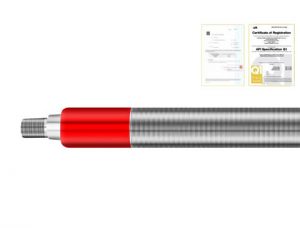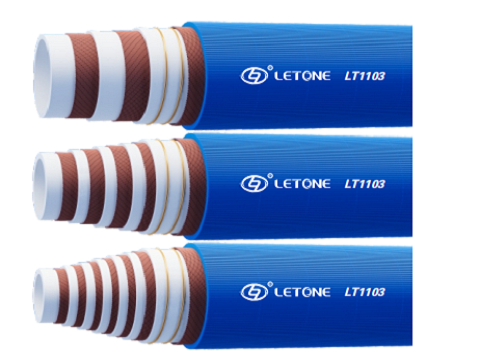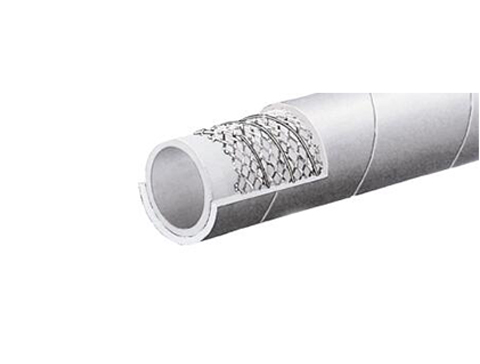In the vast field of oil exploration and extraction, the importance of API 16C hoses and API oil pipes as key links connecting underground treasures with surface treatment systems is self-evident. These high-tech pipes not only carry high-pressure, high-temperature, and highly corrosive media, but also need to maintain stable performance in extreme environments to ensure the safe and efficient transmission of petroleum resources. This article will delve into the technical characteristics, application areas, quality control, and future development trends of API 16C hoses and API petroleum pipes, providing a comprehensive and in-depth understanding for industry insiders and outsiders.
 1、 Technical Characteristics Analysis
API 16C hose: As a hose system designed specifically for offshore oil operations, the API 16C standard strictly specifies its structure, materials, testing methods, and usage conditions. These hoses typically adopt a multi-layer composite structure, including an inner rubber layer, a reinforcement layer (such as steel wire weaving or winding layer), and an outer rubber layer, to withstand high pressure, resist wear and corrosion. The inner rubber layer is often made of synthetic rubber that is resistant to oil and chemicals, ensuring the purity and safety of the medium; The reinforcement layer endows the hose with sufficient strength and flexibility to adapt to the complex and ever-changing marine environment; The outer layer provides additional protection against seawater erosion and UV aging. In addition, API 16C hoses must undergo rigorous pressure testing, fatigue testing, and environmental adaptability testing to ensure their long-term reliable operation under harsh conditions.
API oil pipes: Compared to hoses, API oil pipes are more commonly used in pipeline systems for onshore or shallow sea oil extraction. It is produced according to standards such as API 5L and API 5CT, and is mostly made of high-strength alloy steel. It has undergone strict heat treatment, non-destructive testing, and anti-corrosion treatment. API petroleum pipes not only require good pressure bearing capacity and corrosion resistance, but also need to adapt to the burial requirements under different geological conditions. The design parameters such as wall thickness, diameter, and connection method are optimized based on actual working conditions to ensure the safety, efficiency, and environmental protection of oil transportation.
2、 Overview of Application Fields
API 16C hoses are widely used in offshore floating production and storage units (FPSOs), floating drilling platforms, and subsea oil and gas field development due to their high flexibility and adaptability. They serve as key channels connecting subsea wellheads and floating facilities, effectively addressing displacement issues caused by natural factors such as waves and tides, ensuring the continuity and stability of oil and gas production. Meanwhile, in emergency situations, API 16C hoses can be quickly replaced or repaired, reducing downtime and minimizing economic losses.
API oil pipes are distributed in major oil fields around the world, whether it is gathering and transportation pipelines for onshore oil wells or oil and gas transportation pipelines in shallow water areas, their presence can be seen. They bear the responsibility of transporting crude oil from the wellhead to processing plants or storage facilities, and are one of the indispensable infrastructure in the petroleum industry.
3、 Quality Control and Standard Compliance
Quality control is the key to ensuring stable, safe, and reliable performance of API 16C hoses and API petroleum pipes. From raw material procurement, production and processing to finished product testing, every step must strictly follow API and relevant international standards. Manufacturers need to obtain ISO quality management system certification to ensure that the production process is controlled and traceable. At the same time, the product also needs to undergo inspection and certification by a third-party authoritative organization to prove that it meets the specified technical requirements and performance indicators.
In addition, with the advancement of technology and the increasing environmental requirements, API organizations are constantly revising and improving relevant standards to meet the new needs of industry development. For example, in terms of protecting the marine environment, the API 16C standard has added requirements for the environmental performance of hose materials, encouraging the use of recyclable and low pollution materials.
4、 Future Development Trends and Prospects
Faced with the challenges of global energy transition and sustainable development, the API 16C hose and API petroleum pipe industries are ushering in new development opportunities. On the one hand, with the deepening of deep-sea oil and gas resource exploration and development, the demand for high-performance and highly reliable hose and pipeline systems will continue to grow. On the other hand, the increasingly strict environmental regulations will also prompt the industry to accelerate technological innovation and develop more environmentally friendly and energy-efficient products.
In the future, we can foresee the following development trends: firstly, advances in materials science will drive innovation in hose and pipeline materials, such as the application of high-performance polymers and composite materials, which will further enhance product performance; The integration of intelligent and digital technologies will change traditional production and management methods, improve production efficiency and product quality; The concept of environmental protection and sustainable development will run through the entire industry chain, promoting the transformation of the industry towards green and low-carbon direction.
In summary, API 16C hoses and API petroleum pipes, as important components of the petroleum industry, have continuously expanded their technical characteristics and application fields. Quality control and standard compliance are becoming increasingly strict, and their future development prospects are broad. With the continuous changes in the global energy market and the advancement of technology, we have reason to believe that more innovative achievements will emerge in this field, contributing to the sustainable development of the petroleum industry.
1、 Technical Characteristics Analysis
API 16C hose: As a hose system designed specifically for offshore oil operations, the API 16C standard strictly specifies its structure, materials, testing methods, and usage conditions. These hoses typically adopt a multi-layer composite structure, including an inner rubber layer, a reinforcement layer (such as steel wire weaving or winding layer), and an outer rubber layer, to withstand high pressure, resist wear and corrosion. The inner rubber layer is often made of synthetic rubber that is resistant to oil and chemicals, ensuring the purity and safety of the medium; The reinforcement layer endows the hose with sufficient strength and flexibility to adapt to the complex and ever-changing marine environment; The outer layer provides additional protection against seawater erosion and UV aging. In addition, API 16C hoses must undergo rigorous pressure testing, fatigue testing, and environmental adaptability testing to ensure their long-term reliable operation under harsh conditions.
API oil pipes: Compared to hoses, API oil pipes are more commonly used in pipeline systems for onshore or shallow sea oil extraction. It is produced according to standards such as API 5L and API 5CT, and is mostly made of high-strength alloy steel. It has undergone strict heat treatment, non-destructive testing, and anti-corrosion treatment. API petroleum pipes not only require good pressure bearing capacity and corrosion resistance, but also need to adapt to the burial requirements under different geological conditions. The design parameters such as wall thickness, diameter, and connection method are optimized based on actual working conditions to ensure the safety, efficiency, and environmental protection of oil transportation.
2、 Overview of Application Fields
API 16C hoses are widely used in offshore floating production and storage units (FPSOs), floating drilling platforms, and subsea oil and gas field development due to their high flexibility and adaptability. They serve as key channels connecting subsea wellheads and floating facilities, effectively addressing displacement issues caused by natural factors such as waves and tides, ensuring the continuity and stability of oil and gas production. Meanwhile, in emergency situations, API 16C hoses can be quickly replaced or repaired, reducing downtime and minimizing economic losses.
API oil pipes are distributed in major oil fields around the world, whether it is gathering and transportation pipelines for onshore oil wells or oil and gas transportation pipelines in shallow water areas, their presence can be seen. They bear the responsibility of transporting crude oil from the wellhead to processing plants or storage facilities, and are one of the indispensable infrastructure in the petroleum industry.
3、 Quality Control and Standard Compliance
Quality control is the key to ensuring stable, safe, and reliable performance of API 16C hoses and API petroleum pipes. From raw material procurement, production and processing to finished product testing, every step must strictly follow API and relevant international standards. Manufacturers need to obtain ISO quality management system certification to ensure that the production process is controlled and traceable. At the same time, the product also needs to undergo inspection and certification by a third-party authoritative organization to prove that it meets the specified technical requirements and performance indicators.
In addition, with the advancement of technology and the increasing environmental requirements, API organizations are constantly revising and improving relevant standards to meet the new needs of industry development. For example, in terms of protecting the marine environment, the API 16C standard has added requirements for the environmental performance of hose materials, encouraging the use of recyclable and low pollution materials.
4、 Future Development Trends and Prospects
Faced with the challenges of global energy transition and sustainable development, the API 16C hose and API petroleum pipe industries are ushering in new development opportunities. On the one hand, with the deepening of deep-sea oil and gas resource exploration and development, the demand for high-performance and highly reliable hose and pipeline systems will continue to grow. On the other hand, the increasingly strict environmental regulations will also prompt the industry to accelerate technological innovation and develop more environmentally friendly and energy-efficient products.
In the future, we can foresee the following development trends: firstly, advances in materials science will drive innovation in hose and pipeline materials, such as the application of high-performance polymers and composite materials, which will further enhance product performance; The integration of intelligent and digital technologies will change traditional production and management methods, improve production efficiency and product quality; The concept of environmental protection and sustainable development will run through the entire industry chain, promoting the transformation of the industry towards green and low-carbon direction.
In summary, API 16C hoses and API petroleum pipes, as important components of the petroleum industry, have continuously expanded their technical characteristics and application fields. Quality control and standard compliance are becoming increasingly strict, and their future development prospects are broad. With the continuous changes in the global energy market and the advancement of technology, we have reason to believe that more innovative achievements will emerge in this field, contributing to the sustainable development of the petroleum industry.







